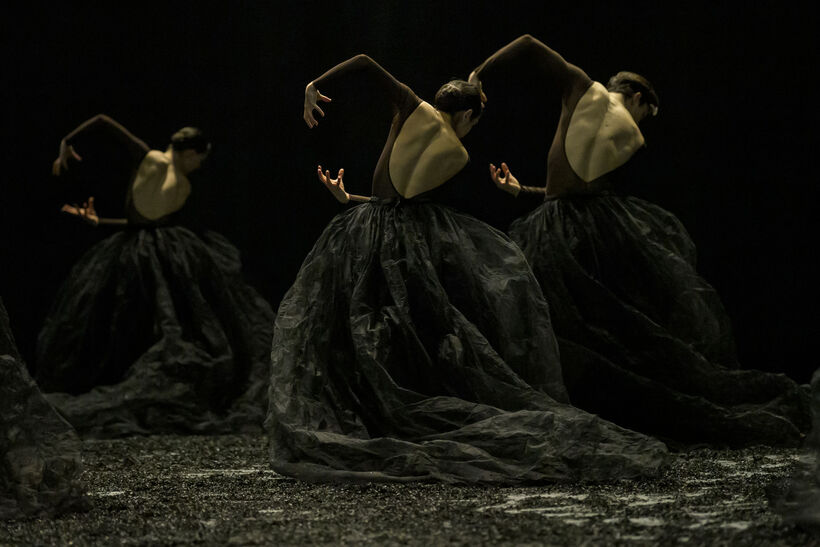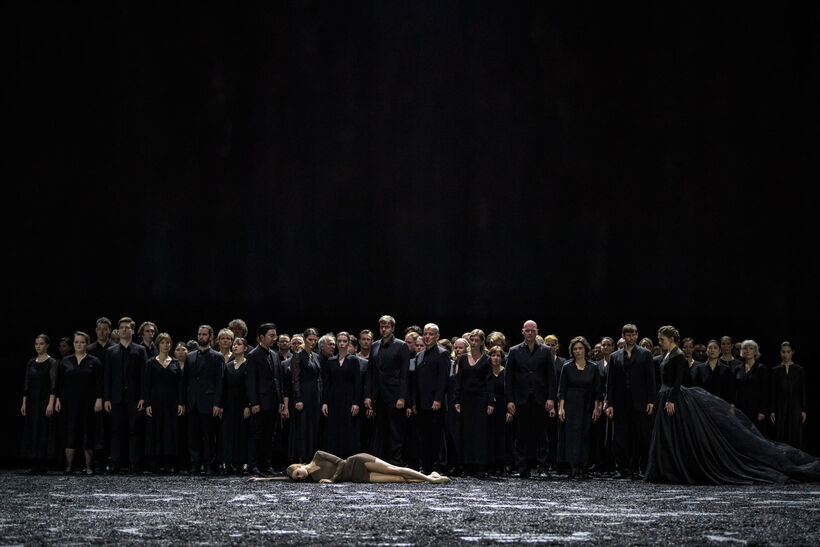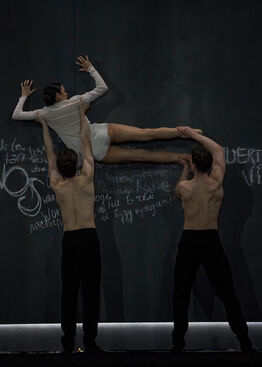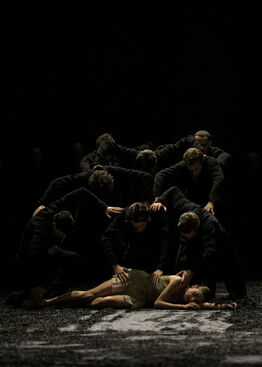Messa da Requiem – When Death is Such a Beauty
Messa da Requiem is a 2016 piece created by German choreographer Christian Spuck for Ballet Zurich based on the well-known music by Giuseppe Verdi. This re-staged production was premièred in Berlin on 14 April 2023 by the Staatsballet Berlin at the Deutsche Oper, where it received thunderous applause and a standing ovation for its remarkable artistic quality and intelligent mise-en-scène.
Messa da Requiem, despite its mournful thematic, represents a perfect example of neoclassical aesthetic joy. This is created by a set of black walls without frills, a corps de ballet in top form, fantastic soloists, and a masterful musical and chorus performance.
Verdi wrote Messa da Requiem (1874) about the death of Italian writer Alessandro Manzoni, with whom he shared the ideals of the Italian Risorgimento. Verdi was inspired by the fundamental themes of spirituality, from the search for faith, to the fear of death, and what the afterlife holds for us. Verdi affirms the position of a man left by himself, lacking the certainty of redemption, alone before the empty world of God's voice. However, Spuck is not interested in a religious interpretation of the libretto, instead he highlights the necessity for people to search for comfort and reassurance. Furthermore, Spuck seems to dwell not so much on the tragic element of death, but on its grandiose element. On the other hand, the scenography of the piece is conceptualised chromatically, built on the contrast of black and white, which clearly represents the colours of death and redemption in Western culture.
The performance begins with a dark and minimalistic atmosphere: as previously mentioned, the empty stage is surrounded by black walls (designed by Christian Schmidt). Two dancers enter, one walking on the side of the stage and the other staying still in the proscenium. After a short while, dynamic duets begin all over the stage, creating a powerful contrast of perception with the dancer still standing motionlessly in front of them.
Spuck creates several tableaux drawn perfectly on Verdi's musical sections. The choreographic language is informed by the neoclassical ballet canon, where pas de deux occur mainly between male and female dancers, with lifts in a cambré, cutting leg extensions, developés á la second etc., all seasoned with a blend of running, duets characterised by lifts and very fast movement series, where the dancers almost seemed to disappear and reappear. As part of the setting, there is a kind of ash or dark snow on the floor which is, from time to time, used and kicked up by the dancers’ movements, creating a spectacular image.
The choir (Rundfunkchor Berlin) impressed me greatly: they were positioned on stage and played a functional role in the choreography. This movement en masse is stunning, together with the speed and precision of the use of the central stage, the walls, and of the stage corners. At times it seems as if this unified mass of dancers and the choir (around a hundred people altogether) is a huge black body of liquid matter, capable of moulding itself into different shapes and perspectives. One of the most touching moments is when this mass of people starts to write in white chalk on the black wall: the action of writing creates not only a collective physical movement, but also the sounds of the chalk screeching, which adds a short soundscape to Verdi’s musical score. At the end of this gesture, one word emerges from this collaborative writing on the central wall: Friede (peace).
The musical and choir direction by Nicholas Carter and Gijs Leenaars respectively deserves praise, not only for the precision of the execution, but also for the sensitive nuance of this musical production.
The show lasts an hour and a half and, from my perspective, the time passed quickly and the piece was definitely engaging. However, even though the choreography is perfectly structured and is a pleasure for the eyes, my feeling is that Spuck's choreographic language does become repetitive at a certain point. While it succeeds in embodying that feeling of the Requiem, searching for reassurance in times of loss and grief through moving pas de deux and ethereal solos, it perhaps does not fully develop the various shades and structures of the music.
The other thing I found curious was Spuck’s decision to start his time with the Staatsballett with a re-staging of an older production. While I understand the choice of this aesthetically perfect Gesamtkunstwerk to celebrate his momentous, well-deserved arrival at the helm of the Staatsballet Berlin, I wonder why he did not choose to celebrate with a new creation designed especially for this company? Perhaps it was a result of previous Covid-19 complications? It has been announced that his next piece for the Staatsballett Berlin will be a new production based on Gustave Flaubert’s novel Madame Bovary and the search for hedonism, which seems like the perfect theme for this city.
Surely his arrival is a good sign for the company and for the ballet enthusiasts: the audience at the première was excited for this perfect evening of aesthetic delights.
Written from the première on 14 April 2023 at Deutsche Oper Berlin.
Messa da Requiem
Choreography and staging: Christian Spuck
Music: Giuseppe Verdi
Stage design: Christian Schmidt
Costume design: Emma Ryott
Lighting design: Martin Gebhardt
Dramaturgy: Michael Küster, Claus Spahn
Chorus master: Justus Barleben
Staatsballett Berlin soloists and corps de ballet
Rundfunkchor Berlin
Orchestra of the Deutsche Oper Berlin
Co-produced by the Staatsballett Berlin and the Rundfunkchor Berlin





.jpg)

